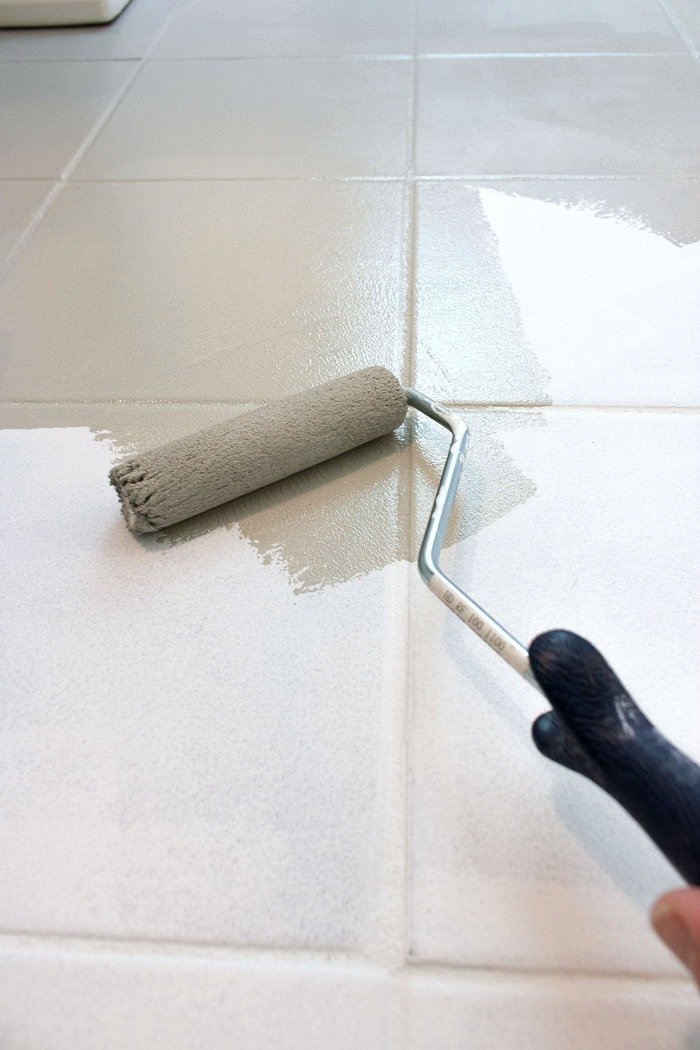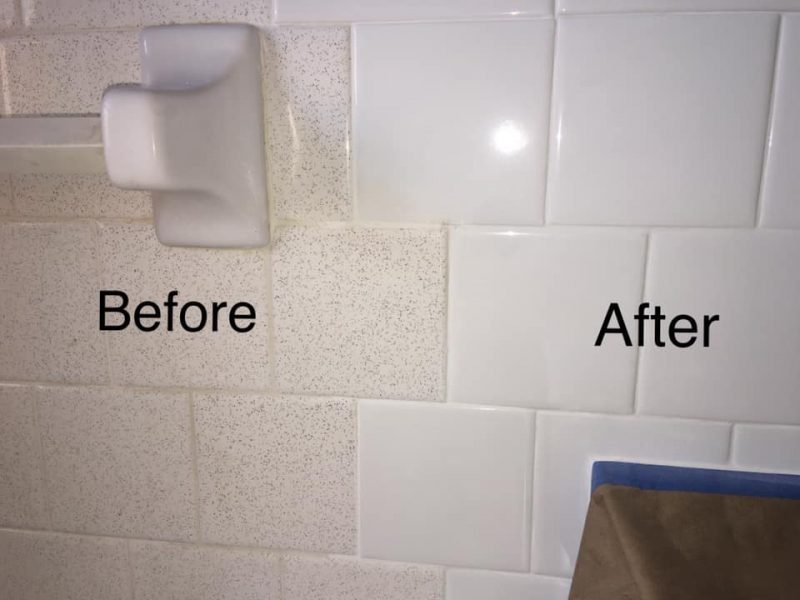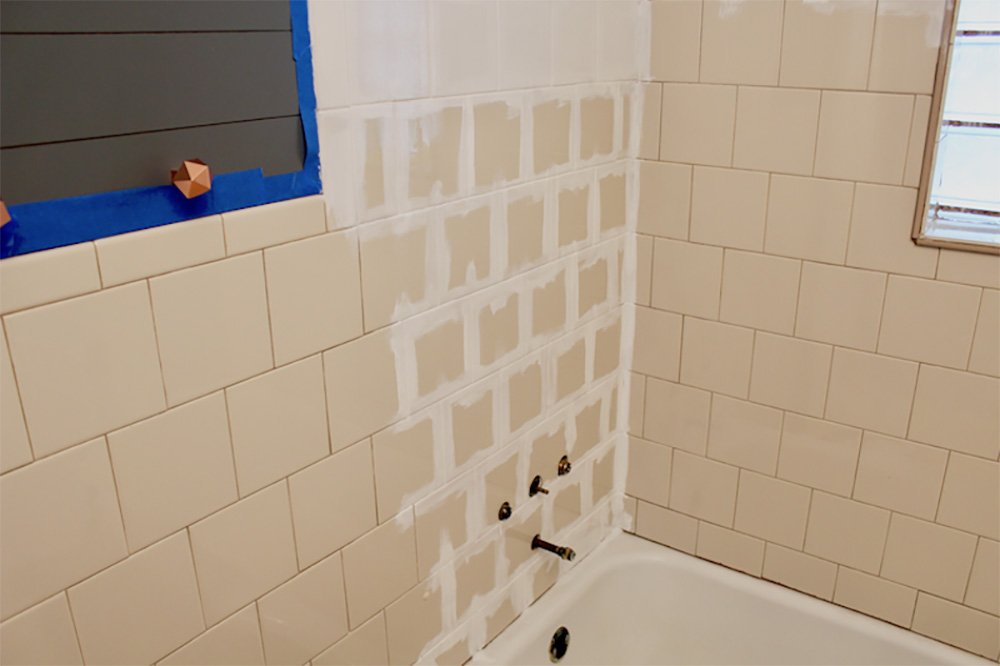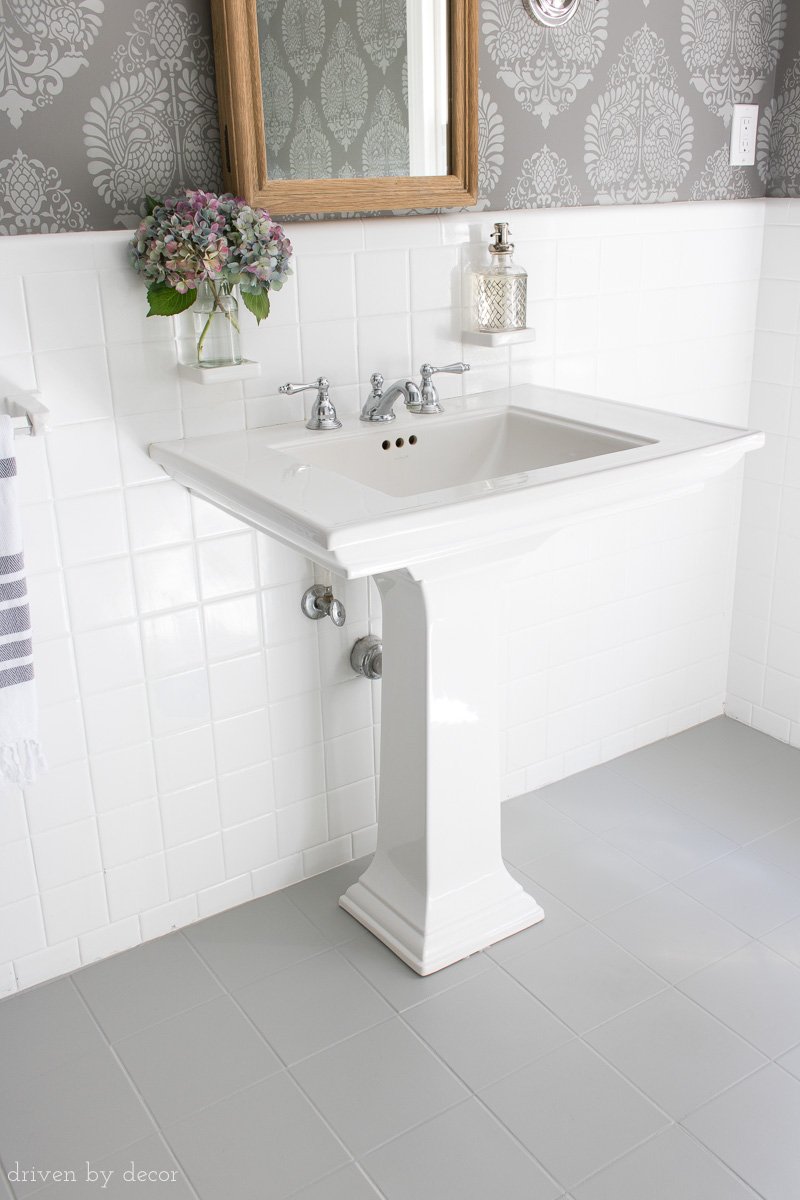Can You Paint Bathroom Tile?
The answer is Yes, you can! Painting your bathroom tile is a great way to update your bathroom without the expense of a major remodel. Plus, you can choose from a wide range or colors and patterns that will breath new life into the room.
Here’s a few helpful pointers:
You can apply paint to most popular types of tile: ceramic, porcelain, natural stone, or even un-glazed quarry tile. But your paint job will last the longest on tiled bathroom surfaces that receive low to moderate exposure to moisture —bathroom floors, walls, and backsplashes.
1) Preparation is Key:
Surface Cleaning entails sanding, vacuuming, and then scrubbing the tile and grout lines to remove dirt and grime. Check the grouting of the tiles before moving on to the next step. If it needs cleaning or even re-grouting, ensure you do this before painting for the best possible finish.
Once the tiles are clean, you must then sand them down (use a 120 grit sandpaper) to create a surface the paint can adhere to. This creates a slightly rougher surface that makes it much easier to paint. Once you have scuffed the tiles, clean with water and a cloth to ensure no material is left. Any dust will prevent the paint from performing so make sure they are fully clean.
2) Best to Prime Before Painting - Once tiles are clean using a primer made especially for tiles creates a layer on the bathroom tiles that allows the paint to stick to the surface ensuring a long lasting finished product.
3) Choosing the Right Paint -
Ceramic, porcelain, and unglazed quarry tile can take either latex or epoxy paint in one-part (pre-mixed) or two-part (ready-to-mix) varieties formulated for interior use. For the “splash zones” of backsplashes, countertops, tub surrounds, and shower surfaces, epoxy paint does the trick. This type of paint cures into a harder, more durable coat that boasts more resistance to moisture, heat, and everyday wear-and-tear than its latex counterpart. Natural stone tiles, on the other hand, need an acrylic latex paint formulated for interior masonry or stucco. All of these paints come in a full spectrum of sheens ranging from flat to high-gloss. The glossier the finish, the more slippery the painted tile will be. Flat and matte sheens afford the most traction underfoot.
When painting, first, 'cut in' using a brush, painting around the edges of the tiling you are painting. Once this is done, you can then use the roller to evenly apply the paint to the rest of the surface.
Leave to fully dry and repeat the process again with your second coat. It may take two or even three coats to achieve the finish you desire.
4) Sealing the Finish Coat -
Finally, sealing the painted bathroom tile protects your project from grime, scuff marks, and scratches. Your clear sealer (urethane sealer for ceramic or porcelain, or masonry sealer for natural stone or quarry tile) also has a dry time you’ll want to factor into your planning. Only after you’ve waited the full time should you begin to use the bathroom.
How Long Does Painted Tiles Last?
It is difficult to say as it completely depends on the paint you are using, the conditions they will have to endure and the level of attention that was taken when they were prepped before painting. Your painted tiles will last a good few years without needed maintenance if you use a good-quality paint and prepare the surface well before starting.
If you want more information or would like an estimate to paint your bathroom tiles contact Cobb Brothers Company today. 508-655-7910 or info@CobbBrothersCo.com. We are happy to help bring new life to your bathroom!





